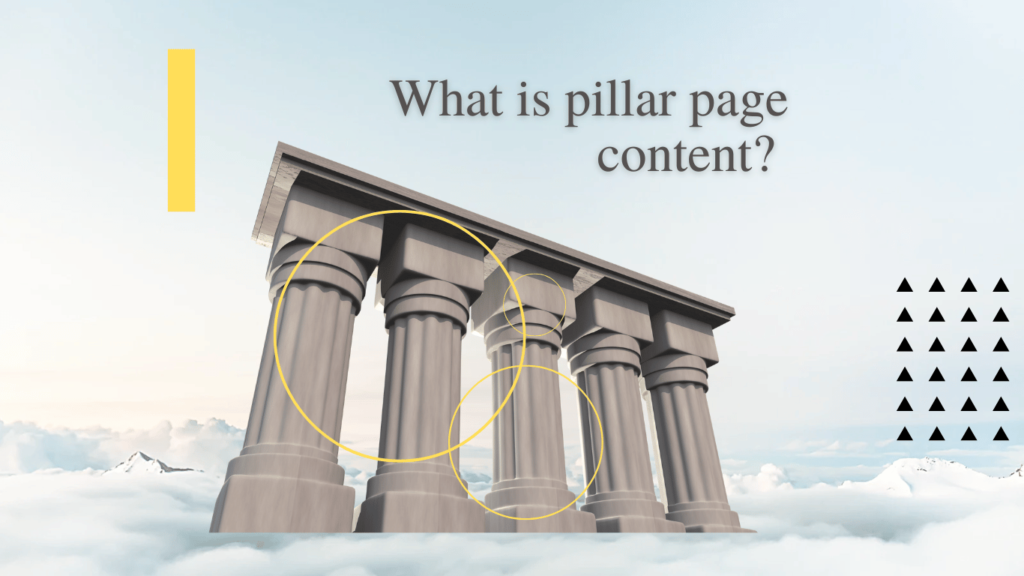In the world of content marketing, the term “pillar page” might sound fancy, but it’s actually a simple and powerful concept. Think of it as the foundation of your content strategy, a single, comprehensive page that serves as a hub for a specific topic.
Whether you’re a beginner or a seasoned marketer, understanding pillar pages can help you create content that’s well-organized, easy to navigate, and valuable to your audience. Let’s break it down.
What Exactly Is a Pillar Page?
A pillar page is a detailed piece of content that covers a broad topic in depth. It acts as a central hub that links to related, more specific content (known as cluster content) and vice versa.
For example:
If your pillar page is about “Healthy Eating,” it might include links to cluster pages like:
- Meal Prep Tips for Beginners
- Best Foods for Weight Loss
- Understanding Macronutrients
Together, these pages form a content cluster, with the pillar page at its core.
Why Are Pillar Pages Important?
Pillar pages are like a roadmap for both your readers and search engines. Here’s why they’re important:
1. Improved SEO:
Pillar pages help you rank better in search results by organizing your content around one central topic. Search engines love well-structured content
2. Better User Experience:
Readers can easily find all the information they need without jumping from site to site. Everything is neatly linked.
3. Showcase Your Expertise:
A well-crafted pillar page establishes you as an authority on the topic. It’s your chance to shine!
4. Boost Internal Linking:
By linking your cluster content to your pillar page, you create a strong internal network that keeps readers on your site longer.
What Does a Pillar Page Look Like?
A great pillar page is:
- Comprehensive: Covers the topic broadly but doesn’t go too deep (leave that to your cluster pages).
- Organized: Uses clear headings, subheadings, and links for easy navigation.
- Engaging: Includes visuals, examples, and a conversational tone to keep readers interested.
For example, if your topic is “Digital Marketing,” your pillar page might look like this:
- Introduction: What is Digital Marketing?
- Core Components: SEO, Social Media Marketing, Content Marketing, etc.
- Best Practices: Tips to Succeed in Digital Marketing
- Resources: Links to blog posts, guides, or tools for deeper learning
How to Create a Pillar Page
- Pick a Broad Topic
Choose a topic relevant to your audience that you can break into smaller subtopics. - Plan Your Cluster Content
Identify related subtopics that you’ll cover in separate blog posts or pages. - Write Your Pillar Page
Create a detailed, high-quality page that provides an overview of the main topic while linking to the cluster content. - Optimize for SEO
Use keywords strategically, add internal links, and include a compelling meta description. - Update Regularly
Keep your pillar page fresh by adding new links or updating outdated information.
Final Thoughts
A pillar page is more than just a piece of content—it’s a strategy that helps organize your website, improve your SEO, and provide real value to your readers.
If you’re looking to take your content game to the next level, start with a pillar page. It’s the perfect way to structure your content and establish yourself as an authority in your field.
Remember: A strong foundation leads to a stronger online presence. So, why not make your next blog a pillar page?
Let’s get started.
Adil Rafeeque is a co-founder of Domaindotin and a freelance digital marketer turned performance marketer in Kerala. Specializing in SEO, Google Ads, and content writing, Adil helps businesses grow their online presence with innovative and result-driven strategies. As an SEO expert in Kerala, he combines his expertise in Google Ads with a passion for continuous learning to deliver impactful results for clients.

Pingback: 14 Crucial SEO Insights I Wish I Knew Earlier - domaindotin.com
I?¦ve recently started a site, the information you offer on this web site has helped me greatly. Thanks for all of your time & work.
Very clean internet site, thanks for this post.
obviously like your website but you have to test the spelling on several of your posts. Many of them are rife with spelling issues and I to find it very troublesome to tell the reality nevertheless I will definitely come again again.
Hi there, just was aware of your weblog thru Google, and found that it is truly informative. I am gonna watch out for brussels. I will appreciate in case you proceed this in future. Numerous people might be benefited from your writing. Cheers!